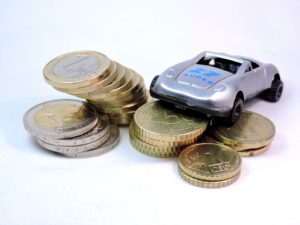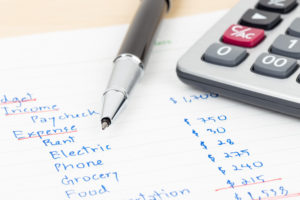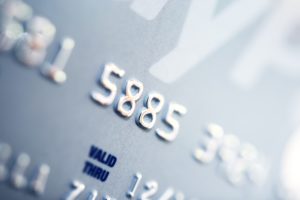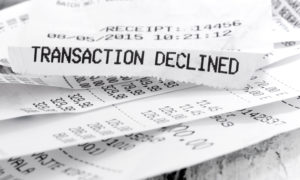What is an initial payment on a car lease?
The initial payment on a car lease is the amount of money that the driver can afford to put towards the overall lease cost up front. Not to be confused with a deposit, the initial payment allows the driver to spread the remaining cost over the number of months in their contract. The more that can be paid up front, the less the monthly payments will be.
Discover your options for financing your next vehicle
Is the initial payment on a lease car refunded at the end of the lease contract?
No, the initial payment on a lease car is not refunded. Unlike a deposit which is refunded at the end of a contract. Instead, the initial payment simply means that the monthly payments throughout the term of the lease are smaller. The lease overall is the same price.
On a car lease can any amount be put down as an initial payment?
 The main difference between an initial payment on a car lease and a deposit is that the amount is variable. Usually, the lease company offers four options for the initial payment on a car lease. The cheapest initial payment option is to pay 3 of the monthly instalments up front. The next would be 6 months up front and the third 9 months up front. There is also an option to pay 12 months up front. The advised initial payment amount is adjusted depending on the length of the lease and the annual mileage needed.
The main difference between an initial payment on a car lease and a deposit is that the amount is variable. Usually, the lease company offers four options for the initial payment on a car lease. The cheapest initial payment option is to pay 3 of the monthly instalments up front. The next would be 6 months up front and the third 9 months up front. There is also an option to pay 12 months up front. The advised initial payment amount is adjusted depending on the length of the lease and the annual mileage needed.
Depending on how much is chosen as the initial payment the monthly premiums will reduce. The overall cost of the lease will be the same. Read these 7 tips to build a household budget.
What are the advantages to putting down a higher initial payment on a car lease?

The advantage to higher initial payments is the lower monthly lease fee. The lower fee frees up more funds monthly which is handy if you are likely to have a fluctuating monthly income. The downside of a higher initial payment is sourcing the funds to do so. Putting down a higher initial payment is entirely down to discretion and personal preference.
Is an initial payment required for Hire Purchase?
Hire purchase is different to other car leasing options. There is a deposit to pay on hire purchase vehicles. The deposit on a hire purchase vehicle is 10% of the overall value of the vehicle. The remainder of the cost of the vehicle is paid in monthly instalments over the chosen time frame. The car or van remains the property of the finance company until the full repayments have been made. There are no excess mileage fees with hire purchase compared to other lease options. This is because at the end of the contract the driver is purchasing the vehicle.
Learn more about hire purchase and personal contract hire
How will I need to pay the initial payment on a lease vehicle?
 An initial payment is usually made with the first monthly Direct Debit. Bank transfer is also a suitable option. Alternatively, prior to the delivery of the vehicle, a credit or debit card payment can be made. Cash payment of an initial payment is not offered as an option.
An initial payment is usually made with the first monthly Direct Debit. Bank transfer is also a suitable option. Alternatively, prior to the delivery of the vehicle, a credit or debit card payment can be made. Cash payment of an initial payment is not offered as an option.
Some finance providers will insist that all payments, including the initial payment, be made via direct debit or bank transfer as a precaution to prevent money laundering.
Initial payments and preferred options for making an initial payment should be discussed with an OSV representative at the point of sale.
When is the initial payment for a lease car due to be paid?
This is dependent on the method of initial payment chosen. If a debit or credit card transaction is the preferred method of initial payment then this will need to be made in advance of even arranging a delivery date of the vehicle. The lease company will contact the driver to inform them that the vehicle is ready and during this call take the initial payment over the phone.
If the chosen method of payment is direct debit or bank transfer then this is made after delivery of the vehicle has been completed. Every finance provider has different rules on timescales for this payment but it can vary from seven to ten days post delivery. The lease advisor will be able to advise on the exact payment dates for each finance house.
What if the initial payment can’t be made?
 If a debit or credit card payment agreement is in place to obtain the initial payment and it declines then a secondary method of pre-payment will be requested. The delivery of the vehicle will need to be postponed until the payment can be satisfied.
If a debit or credit card payment agreement is in place to obtain the initial payment and it declines then a secondary method of pre-payment will be requested. The delivery of the vehicle will need to be postponed until the payment can be satisfied.
When initial payments are due by direct debit or bank transfer the finance company will attempt to take the payment after the vehicle has been delivered. It will count as a late payment if there are insufficient funds in the account to service the payment. Late payments on finance agreements negatively impact a person’s credit score. If late payments continue throughout the lease contract then the necessary procedures will commence repossessing the vehicle and the outstanding payments.
Can a higher initial payment on a lease car help with poor credit?
There are some great leasing options for people with bad credit. A higher initial payment will ensure the finance house takes less of a risk when lending to somebody with poor credit. Each case is considered on an individual basis. There are no guarantees that a higher initial payment will secure a car lease. The team at OSV are experts in the field of car leasing and can provide advice on the most suitable options for customers with poor credit.
Could purchasing a lease car help to improve my credit score?
When credit agreements are kept to, good credit is built. A lease car contract would count as a credit agreement and so it has got the potential to positively impact a credit score. Leasing a car also has the ability to negatively impact a person’s credit score. Bad credit is built if the monthly repayments are missed or late. This can seriously harm a person’s ability to obtain credit in the future.

